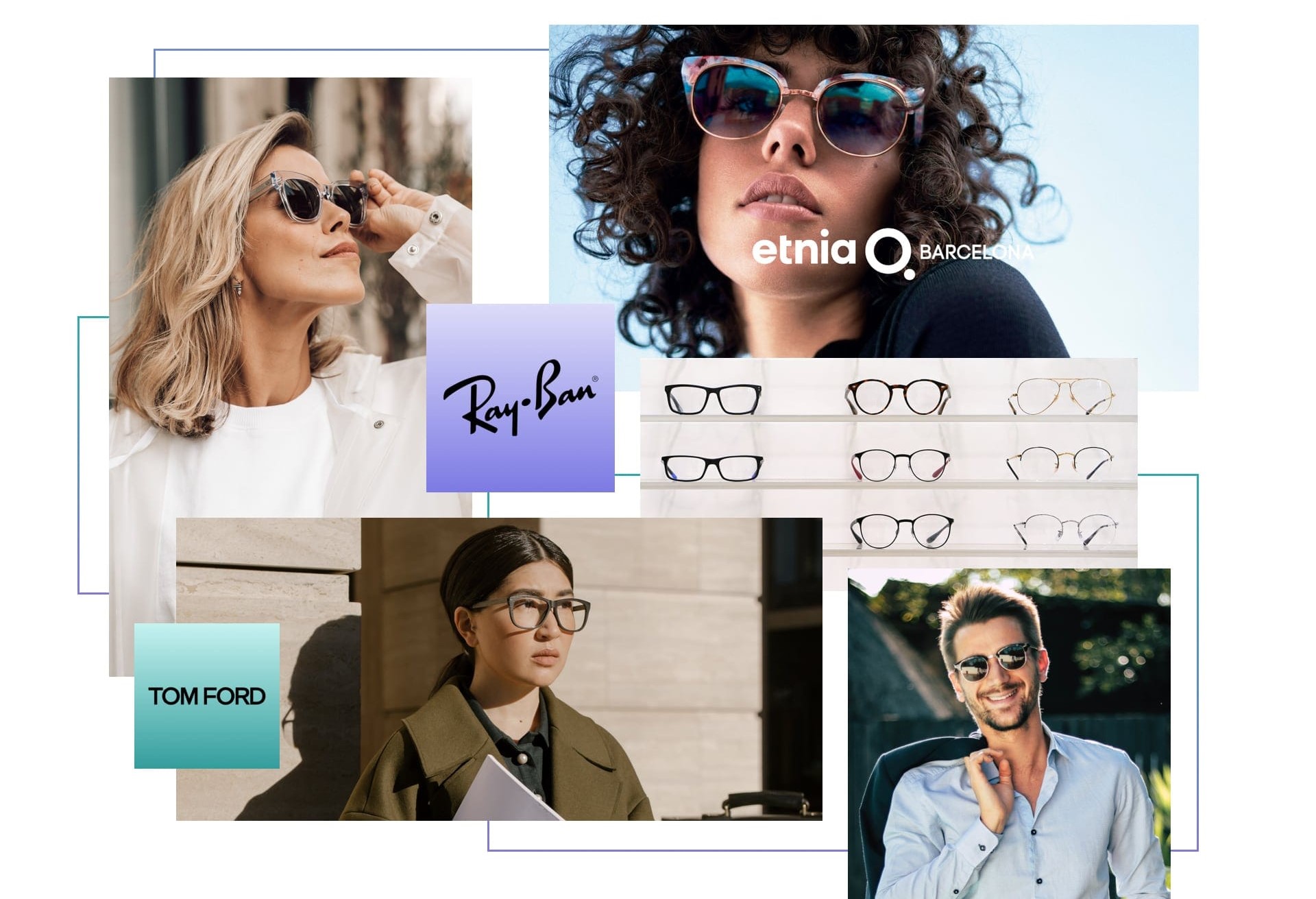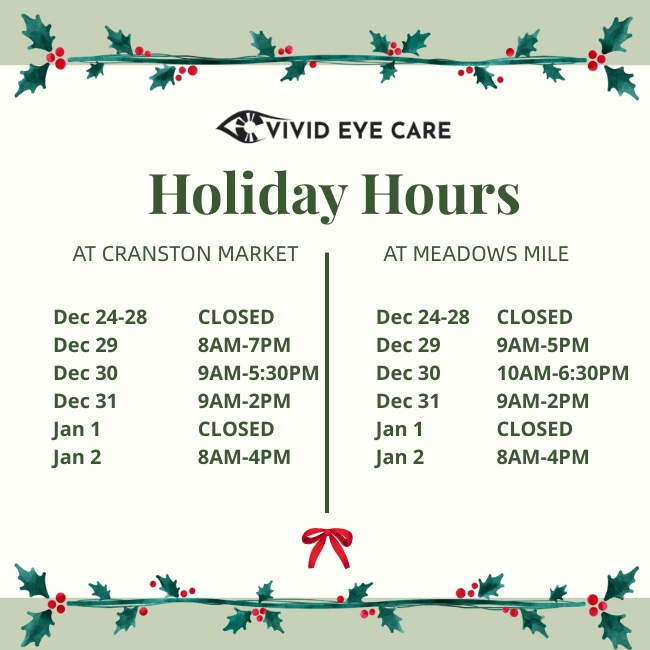I recently came across a new study conducted in the UK that shows, according to a general public cross-section, sight is the most valued and highly regarded sense. This is something always suspected, but until now there has been little empirical evidence to support it.
It goes without saying that sight is something all people highly value and treasure. And when it comes to keeping our eyes safe and free from harm, we know implicitly to keep harsh chemicals and irritants away from our eyes: things like bleach, cleaners, and pesticides. We’re taught even at a young age that these can do extreme damage to our eyes, even causing blindness.
But are we unknowingly doing as much damage to our eyes slowly and systematically? On some level, we may be.
How Eye Makeup Can Harm Your Eyes
Eye makeup is something women, and many men, use daily, directly in or around the eye. As stated above, we know to keep harmful irritants away from our eyes, but what about eye makeup?
With the advent of online tutorials and social media influencers, makeup is as prevalent as ever. In fact, the Canadian cosmetic market is expected to reach 15.8 billion US dollars by 2021, an increase of almost three billion from 2016. These are startling numbers: and may not account for additional pollutants such as artificial eyelash glue, hair care products, perfumes, and other beauty-related goods.
Although the cosmetic industry has come a long way by introducing toxic-free, organic, and hypo-allergenic products, the majority of make-up is made up of harmful irritants, such as nickel, fragrance, and carbon black. And when placed around the eyes, it can cause some very real damage.
The Canadian Government has imposed numerous measures and regulations on the number of heavy metals to which Canadians are exposed. However, many available products still contain harsh ingredients that can cause eye infection and conditions if not used carefully.
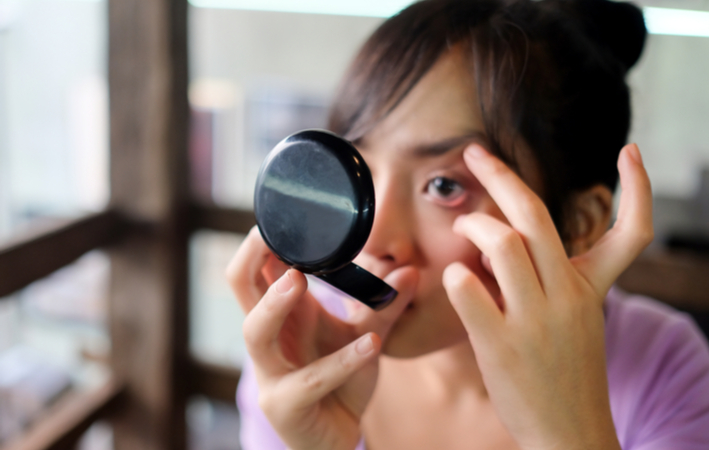
Eye Infection
An eye infection is a common result of bacteria, chemicals, and irritants found in makeup. Most common infections include:
Conjunctivitis (Pink Eye)
When the eye comes into contact with makeup or other beauty products, the conjunctiva, the coating that protects the eyeball, becomes inflamed, vessels dilate and the eye turns red. This can be caused by irritants or chemicals in the makeup that are too toxic for the eye to handle. Or, it can be bacteria in the makeup itself – often picked up via cross-contamination in the bathroom.
Keratitis
Infectious keratitis can occur when the cornea comes into contact with bacteria. The cornea becomes inflamed, resulting in pain and blurred vision. This can often be a common problem with people who wear contact lenses and may occur from toxic or old makeup.
Stye
A stye is a painful red bump located under the eyelid or at the base of your eyelashes. Formed when oil glands get infected by bacteria, styes can be painful and irritating. Common causes are old makeup and not washing old makeup off eyes properly.
Expired Makeup
Like anything, makeup has a shelf life. Continuous use of eye makeup can increase bacteria picked up from our skin, from our home and any other surrounding it comes into contact with. And if the product continues to be reused, bacteria continues to grow: soon a loop of potential eye damage ensues.
I tell my patients to toss away their makeup:
- When it expires
- If it’s over 3 months old
- If it’s dry and clumpy (mascara) as the particles are more likely to fall into the eye
- After an eye irritation or infection
Similarly, it is important to clean all makeup brushes regularly, especially ones used on or near the eye. Bacteria can grow on them as well, spreading it around and causing potential harm.
Meibomian Gland Dysfunction
A natural eye protector, our meibomian glands produce oil that is secreted in a thin layer on top of tears to prevent premature evaporation. However, if these glands malfunction and are unable to release enough meibum, meibomianitis, or meibomian gland dysfunction occurs. Without the oil film, tears evaporate too quickly and the eye becomes dry.
While there are many risk factors, contamination and bacteria from makeup and contact lenses are popular culprits.
Blepharitis
Blepharitis is an inflammation of the eyelids. More specifically, inflammation of the oil glands that are located directly behind the eyelashes. This causes a blockage of glands and prevents the oil (meibum) in our tears from flowing. If left untreated, the glands become more irritated and can often become infected. Crusty eyelashes, lost eyelashes and the presence of styes are common.
There are several causes as to why these glands become inflamed and blepharitis occurs, but a common reason is fungal or bacterial infections that form when makeup is not removed properly.
Makeup & Contact Lenses
Contact lenses alone can cause eye issues. When not cleaned or stored properly, bacteria can form and quickly affect the health of our eyes. However, couple this with makeup containing harmful ingredients, expired makeup, and makeup that isn’t washed off the face properly, and it can be a perfect trifecta for eye irritation.
When conducting contact lens fittings with our clients, I always stress proper makeup removal and contact lens care.
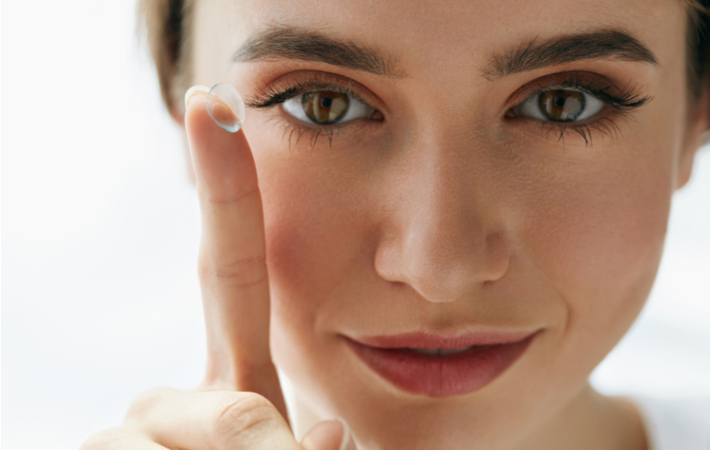
We often stress the importance of washing our hands, but the routine pattern may be important: the American Optometry Association advises that soft contact lenses should be inserted before makeup application, and hard contacts inserted after application. This has been shown to reduce the amount of residual product left on the eyes and the contacts themselves.
At the end of the day, remember to remove your contact lenses before taking off your makeup.
Sensitive & Dry Eyes
Dry eye syndrome is an increasing condition that results in red, itchy, tired, and strained eyes.
A new survey commissioned by the Alberta Association of Optometrists suggests that over 90% of Albertan adults suffer from dry eye. These numbers are startling. Coupled with irritants in some makeup, this can only compound the problem substantially.
Best Makeup for Dry & Sensitive Eyes
Of course, the best prevention for dry eye is a make-up free face. However, for some, this is not realistic. For this reason, Health Line suggests the following rules when choosing makeup for dry eye wearers.
- Simple is best. Stick to makeup with the least amount of ingredients, opt for formulas that are mineral-free and hypoallergenic.
- Cream-based makeup has less loose particles than powder-based formulas
- Avoid coloured mascara, as it has extra dyes in it that can irritate
- Avoid glitter makeup – glitter is less bonded and will undoubtedly end up in your range of vision
- Avoid waterproof mascara. Because it is harder to remove, the eye can undergo more rigorous scrubbing, leading to more irritation
But it’s just not the type of makeup used that can irritate, it is how it is applied.
An American study has concluded that pencil eyeliner migrates more readily into the tear film when applied behind the lash line, rather than above it. The same study above also found that subjects who applied glitter eyeliner to the waterline (the skin between the eyelashes and the eyeball) experienced a higher volume of particles in their tear film than when applied outside the lash line.
The same is true of mascara – it is recommended to just use it on the tips of the lashes, being careful not to apply to the roots.
Best Makeup Remover for Dry & Sensitive Eyes
Like makeup, it is best to choose a makeup remover with the least amount of ingredients possible. The old adage applies here: if you can’t pronounce the ingredients, you don’t want them on your face.
Instead opt for perfume-free, paraben-free, and preservative-free options.
Micellar water
A fairly new cleansing and makeup removing product on beauty shelves is micellar water. Made up of purified water and micelles (molecules that group together to attract dirt and oil), recent studies show that it is a good option for sensitive skin and eyes due to its low irritation potential and its ability to improve moisturization.
Blephagel
Used as a treatment for blepharitis, Blephagel is used to clean away debris around the eyelid and eyelash area and reduce inflammation/redness around the eye. It is also known as an effective makeup remover and is preservative-free and hypoallergenic.
I-LID ‘N LASH
We carry a line of products called I-LID N’ LASH, which are specially designed for ocular hygiene. Their dual-purpose cleanser/ makeup remover formula is available in liquid form as well as pre-moistened wipes. The soothing treatment does not sting or burn, and instead moisturizes. Some products also include Tea Tree oil, which can help reduce eyelid inflammation.
Makeup & Allergies
It can often be difficult for general practitioners to distinguish dermatitis (a rash caused by an irritant) from a more serious skin allergy, as they often present in similar ways.
Simply states, dermatitis is skin irritation that forms from an allergen or irritant. In cosmetics, common allergens include:
- Preservatives
- Antioxidants
- Resins
- Pearlescent additives
- Fragrances
- Nickel and other metals
- Surfactants
Often a patient can be allergic to a certain component in a makeup product – causing rash, inflammation, redness, and dry flaky skin along the lash line or eyelid.
Whatever the cause, it is recommended to discontinue the use of the particular cosmetic immediately and opt for a hypo-allergenic or organic product. For continued issues, a referral to a dermatologist may be required for more vigorous allergic testing.
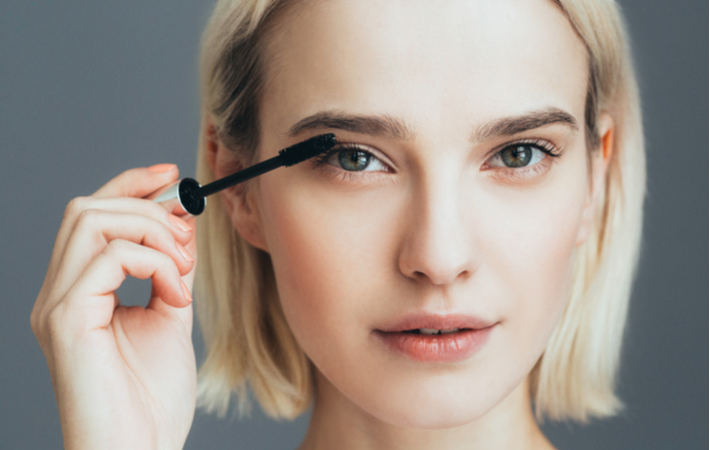
Patient Education
As an optometrist, I feel it’s important to educate my patients on choosing safe eye makeup products and practicing a safe makeup routine. After all, the placement of these products directly on and in the eye can easily hinder eye health.














